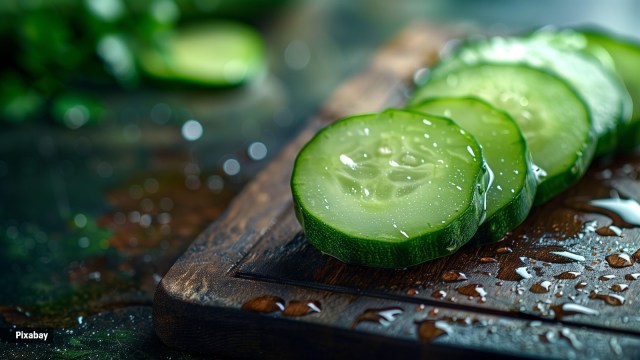📣 For more lifestyle news, click here to join our WhatsApp Channel and also follow us on Instagram
This super easy hack to grow a cucumber is going viral for all the right reasons
A cucumber, a paper towel, cinnamon, and a little sunlight might just be the recipe for better mental health.
 The joy of growing something with our own hands is deeply rooted in psychology and neuroscience (Source: Pixabay)
The joy of growing something with our own hands is deeply rooted in psychology and neuroscience (Source: Pixabay)Our lives may have shifted to the digital grid, but the satisfaction of tactile activities remains unparalleled. The joy of creating something with our hands has yet to find a technological alternative, and this principle extends to urban gardening (besides, of course, the good old DIYs).
Armen Adamjan, a popular content creator, recently took to Instagram to share an easy cucumber-growing hack at home. The American-Danish creator breaks down the process into simple steps that require no fancy gear. But behind this trending reel lies more than just a viral idea; it taps into deep-rooted science and an age-old human need to make, grow, and nurture.
What Are the Steps?
To begin your cucumber-growing journey, pick a healthy, fresh cucumber. Scoop out the seeds and soak them in water for half an hour. Keep only the seeds that sink and discard those that float.
Place the seeds on a damp paper towel, sprinkle a bit of cinnamon to prevent mold, fold it, and seal it in a ziplock bag. Keep it in a warm, dark spot (like above the oven), and within 2–3 days, the seeds will begin to sprout.
Once sprouted, plant them in soil and cover with a cut plastic bottle to create a humidity dome. Place it in a sunny area and watch them grow.
View this post on Instagram
The Science Behind the Technique
Adamjan’s technique is rooted in seed biology and dormancy science. Viable cucumber seeds are dense because of developed embryos. When soaked in water, these seeds sink, while immature, hollow, or nonviable seeds float.
However, these seeds are still dormant. When placed on a wet paper towel, they receive a controlled and constant supply of moisture and oxygen—both needed to break dormancy. Cinnamon acts as a natural antifungal agent, preventing mold during the delicate sprouting stages.
The advice to keep the seeds in a dark spot, like under or above the oven, mimics natural soil conditions of warmth and darkness, helping break dormancy and encouraging faster germination.
During this period, the seeds develop roots and shoots, which will later absorb nutrients from the soil. At this stage, the young plant is still vulnerable and requires care. This is where the humidity dome comes into play. It traps moisture around the seedling, creating a warm, humid microclimate that prevents drying out and supports healthy growth.
The Therapeutic Impact of Growing Something
This technique is a miniature version of urban gardening. It caters more to the psychological satisfaction of engagement rather than an abundance of harvest. But why does it feel so good?
This feeling can be explained by the psychological concept of creative process satisfaction—the idea that using our hands to make something real, visible, and alive provides a sense of purpose, agency, and accomplishment.
A 2020 study published in the Journal of Occupational and Organizational Psychology noted that manual activities like gardening, crafting, or cooking create a direct link between effort and outcome, which is psychologically rewarding.
Some institutions are also incorporating planting into therapeutic programs. For instance, the University of North Carolina describes “therapeutic horticulture” as providing benefits such as skill development, creative expression, sensory stimulation, intellectual and cognitive growth, a sense of productivity and self-satisfaction, spiritual connection with life, and improved mental health.
Similarly, a study in Ecological Applications (Soga, Gaston & Yamaura, 2017) found that hands-on gardening significantly improved emotional regulation and resilience, especially among people in high-stress environments.
So while these hacks may seem insignificant, they can create impactful changes in your life—especially as digital overload distances us from the physical world.
More Plants You Can Grow with This Hack
This method isn’t limited to cucumbers. Several other everyday fruits and vegetables can be grown using the same technique, including tomatoes, bell peppers, and chili peppers. Simply scoop out the seeds, rinse them, and germinate them in a damp paper towel.
Somewhat similar but more time-consuming alternatives include lemons, oranges, squash, and melons such as cantaloupe and honeydew. These plants require especially warm and humid conditions, calling for more patience and effort.
📣 For more lifestyle news, click here to join our WhatsApp Channel and also follow us on Instagram
- 01
- 02
- 03
- 04
- 05


























